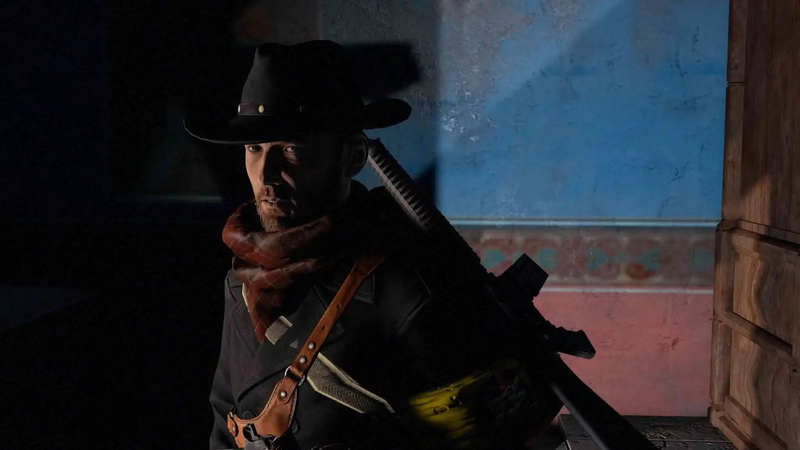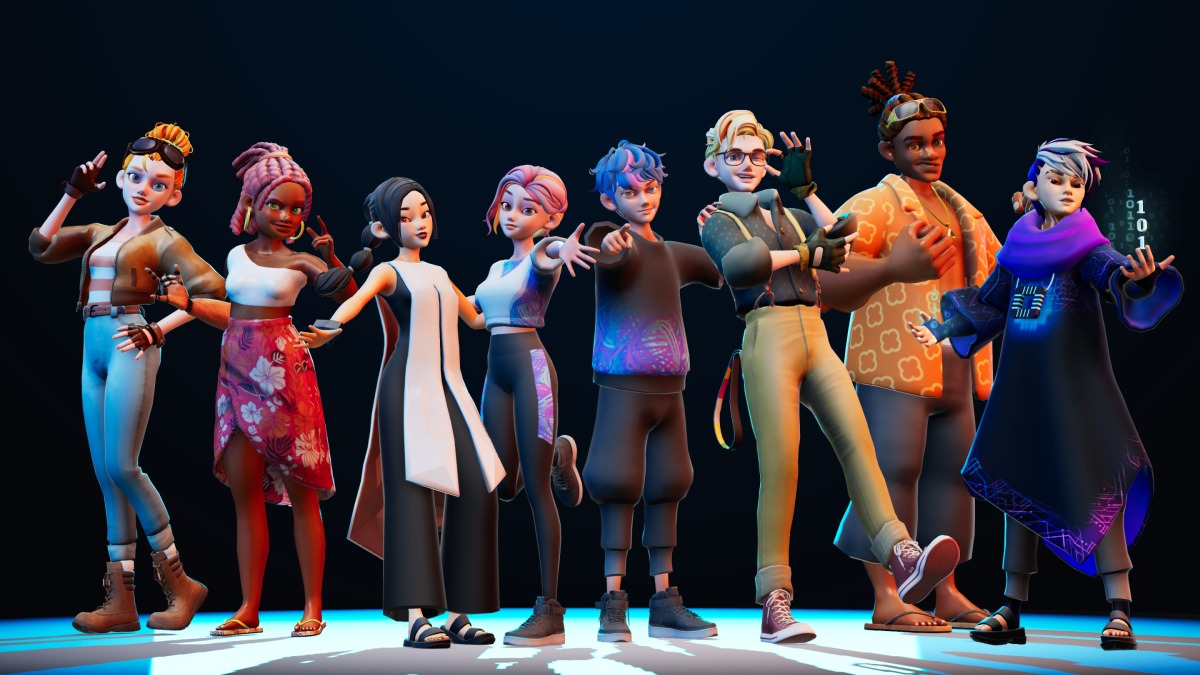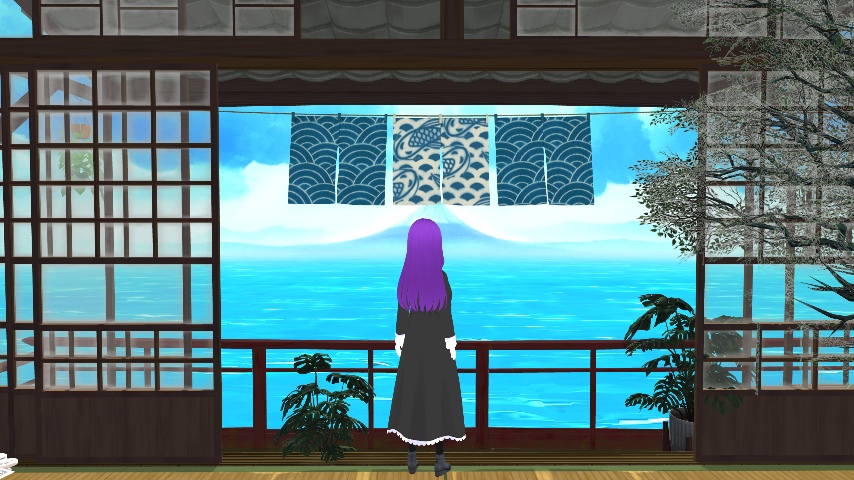Knit’s Island: A Documentary Challenging Virtual Reality and Reality

Metaverse | Extended Reality
5-minute read
"Knit’s Island" has become a hot ticket at the 2024 Taiwan International Documentary Festival (TIDF), with sold-out screenings, and I was fortunate enough to snag a ticket for an additional showing. The Taiwan documentary film chronicles French director Guilhem Causse's foray into the post-apocalyptic zombie game "DayZ" during the 2020-2021 pandemic, where he observed, documented, and interviewed the player community, spending a total of 963 hours in-game, as indicated by the opening credits.
Essentially, the film is a field study conducted within the virtual reality game.
Entering the cinema with curiosity, I wondered: What does a documentary almost entirely edited from game footage document? Is it about the game or life itself? And what does it mean to capture 'reality' within the virtual reality of "DayZ"?
When the Virtual Becomes Another Reality
In conclusion, I believe "Knit’s Island" demonstrates a qualitative change brought about by technology, bringing us closer to the concept of simulation theory. Technologically, the game "DayZ," developed by Bohemia Interactive, is an open-world survival game set in a post-apocalyptic scenario. Players face zombies and other hostile players while scavenging for resources to survive. The game is known for its realistic survival challenges (where cold and fatigue can be fatal) and its freedom (players can expand the game through mods).
Discussions about virtual versus reality often fall into a binary opposition, concluding that despite the allure of virtual reality, we cannot abandon reality. However, the powerful game engine of "DayZ" in "Knit’s Island" blurs the line between virtual and reality. Here, the virtual becomes another reality.
This leads to the origin of the film. The director mentioned that they initially entered the game without the intention of making a documentary, until they met a player who wasn't using any of the game's tools but was just wandering aimlessly. That's when they realized it was possible—you could stop and admire the scenery, look around, sit down and talk to others about something other than the game's main objectives, essentially not playing the game at all.
Suicide from Travel Fatigue, Pausing the Game to Tend to a Child...
One of the most magical segments of the film follows a community patrol/hike led by a pastor named Stone, exploring hills that seem like the corners of the world. The hills, like a green sea, are vast and boundless. The group walks during the day and night, with the daytime revealing an endless landscape and the night illuminated by glow sticks and stars, sometimes gathering around a campfire for conversation. The visuals alone can give the audience the illusion of being in the real world.

Pastor Stone is a central figure throughout the documentary.(Source: YouTube)
During one daytime trek, a member suddenly detonates explosives on himself, killing both him and a nearby player. He chose suicide to escape the tedium of the journey and respawn. Here, the game and reality clash—the game requires enduring the monotony of travel just like in reality (with walking and running speeds mirroring real life across a map about 225 square kilometers), yet unlike reality, one can choose to 'restart by suicide.'
Another disorienting moment occurs when the director interviews a female player. Mid-interview, zombie noises come from the left side of the screen, and another player runs off to fight them, pausing the interview (hard to imagine in real life). Later, the woman suddenly says she needs to check on her child who might have fallen upstairs (audiences can faintly hear the sound of something falling), and the interview pauses again (audiences can clearly hear her talking to her child).
The 'noise of reality' comes through the microphone from the mouth of the player's avatar, who stands still and vacant. At that moment, there's a strange sensation as the player becomes an empty shell, yet also a wormhole between reality and the game—we know reality is 'right there,' but we can't see it. Reality is kneaded into the 3D engine visuals before us.
These segments are the documentary's highlights — showing the audience where reality overlaps with the game. A world where people fight each other and zombies also becomes a place for dreaming, working, and living leisurely.
Lying Flat in Stolen Time, Regardless of Reality
This somewhat conflicting overlap is what I find most intriguing about the documentary. Searching for "DayZ" developer Bohemia Interactive reveals that they have a subsidiary using similar game technology for real military training (including virtual reality training with VR headsets). When game technology reaches the level of simulating the physical world, capable of testing bullet trajectories, explosion ranges, and military strategies, the game becomes a digital twin of the real world. Under such technology, "DayZ" players create their own reality within the survival game—forming communities, idling, chatting, partying—making the game real once again.
On the other hand, "Knit’s Island" showcases people's search for community, regardless of reality or virtuality. This is perhaps more evident in VRChat communities, as the 2022 documentary "We Met In Virtual Reality" attempts to capture. As one interviewed player said, how could you spend thousands of hours in a game without revealing your true self? For instance, the documentary begins with the "Dark as Midnight" group, who take pleasure in killing; during the interview, they have a player tied up, nicknamed "Princess," claiming they could kill (or even eat) him at any moment. The audience can even hear him whisper "help me" at one point.
 The director interviews Dark as Midnight, with the tied-up passerby visible in a position resembling labor on a table.(Source: YouTube)
The director interviews Dark as Midnight, with the tied-up passerby visible in a position resembling labor on a table.(Source: YouTube)
The association and brutality of "Dark as Midnight," and the tension it brings to the audience, are real, yet displayed through the digital world — will it stay in the game? In contrast, Pastor Stone, a masseur by trade, establishes a congregation in "DayZ" and becomes a pastor, genuinely listening to players' troubles. In one scene, he raises a gun to the director and asks how he would feel if he were killed in the game. The director asks him not to do it. Stone then lowers the gun and apologizes, saying he shouldn't have done that. Stone's good deeds, if removed from the "DayZ" world, would they vanish? Perhaps not. He also tells the director and companions that if the real world turned into a zombie apocalypse, he would be willing to stick with them.
"Knit’s Island" is like a Taiwan documentary of the real world turning into "The Walking Dead." Even in such a world, we wouldn't always be killing zombies; more often, we would be fighting each other, and in stolen moments, keeping each other company, admiring the apocalyptic scenery. Through a technological state almost akin to simulation theory, players in the game inescapably express humanity — whether cruel, compassionate, or mundane — challenging our notions of reality and virtuality, and prompting us to consider whether the emotions and relationships found in the virtual world of VRChat are just as real, and perhaps beyond questioning of their reality.


